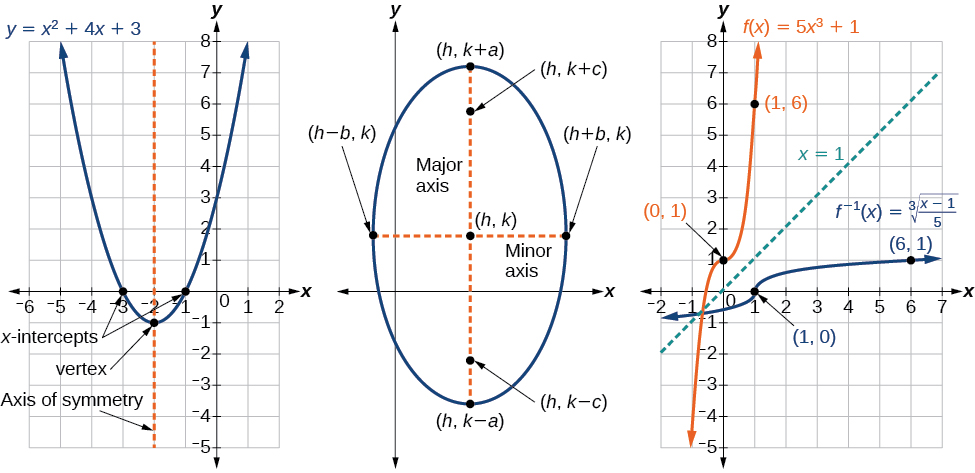| << Chapter < Page | Chapter >> Page > |
Each learning objective is supported by one or more worked examples, that demonstrate the problem-solving approaches that students must master. The multiple Examples model different approaches to the same type of problem, or introduce similar problems of increasing complexity.
All Examples follow a simple two- or three-part format. The question clearly lays out a mathematical problem to solve. The Solution walks through the steps, usually providing context for the approach—in other words, why the instructor is solving the problem in a specific manner. Finally, the Analysis (for select Examples) reflects on the broader implications of the Solution just shown. Examples are followed by a Try It question, as explained below.
Algebra and Trigonometry contains figures and illustrations, the vast majority of which are graphs and diagrams. Art throughout the text adheres to a clear, understated style, drawing the eye to the most important information in each figure while minimizing visual distractions. Color contrast is employed with discretion to distinguish between the different functions or features of a graph.

Four unobtrusive but important features contribute to and check understanding.
 A
“How To” is a list of steps necessary to solve a certain type of problem. A How To typically precedes an Example that proceeds to demonstrate the steps in action.
A
“How To” is a list of steps necessary to solve a certain type of problem. A How To typically precedes an Example that proceeds to demonstrate the steps in action. A
“Try It” exercise immediately follows an Example or a set of related Examples, providing the student with an immediate opportunity to solve a similar problem. In the Web View version of the text, students can click an Answer link directly below the question to check their understanding. In the PDF, answers to the Try-It exercises are located in the Answer Key.
A
“Try It” exercise immediately follows an Example or a set of related Examples, providing the student with an immediate opportunity to solve a similar problem. In the Web View version of the text, students can click an Answer link directly below the question to check their understanding. In the PDF, answers to the Try-It exercises are located in the Answer Key. A
Q&A may appear at any point in the narrative, but most often follows an Example. This feature pre-empts misconceptions by posing a commonly asked yes/no question, followed by a detailed answer and explanation.
A
Q&A may appear at any point in the narrative, but most often follows an Example. This feature pre-empts misconceptions by posing a commonly asked yes/no question, followed by a detailed answer and explanation. The
“Media” icon appears at the conclusion of each section, just prior to the Section Exercises. This icon marks a list of links to online video tutorials that reinforce the concepts and skills introduced in the section.
The
“Media” icon appears at the conclusion of each section, just prior to the Section Exercises. This icon marks a list of links to online video tutorials that reinforce the concepts and skills introduced in the section.While we have selected tutorials that closely align to our learning objectives, we did not produce these tutorials, nor were they specifically produced or tailored to accompany Algebra and Trigonometry .
Each section of every chapter concludes with a well-rounded set of exercises that can be assigned as homework or used selectively for guided practice. With over 6300 exercises across the 13 chapters, instructors should have plenty from which to choose 6,367 total exercises. Includes Chapter Reviews and Practice Tests. .
Section Exercises are organized by question type, and generally appear in the following order:

Notification Switch
Would you like to follow the 'Algebra and trigonometry' conversation and receive update notifications?